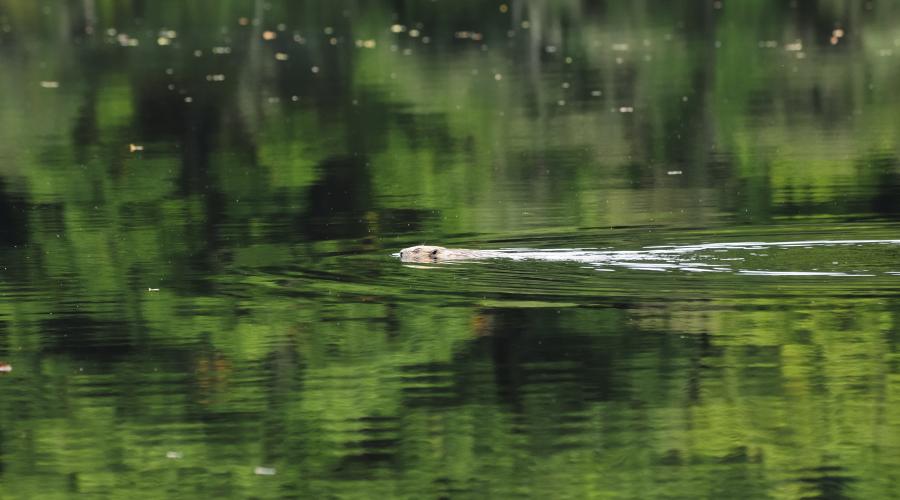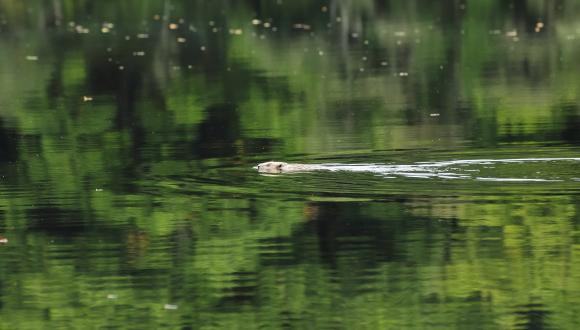
Eurasian beaver
Extinct from Scotland for 400 years, beavers once again inhabit our riparian broadleaved woodland next to standing waters or slow-moving streams.
The Eurasian or European beaver (Castor fiber) occurs from Western Europe eastwards to the Chinese-Mongolian border region. The world population of beavers is thought to be around 1 million individuals, most of which occur towards Eastern Europe.
Beavers inhabit riparian broadleaved woodland next to standing freshwaters or slow moving streams. Totally herbivorous, beavers will feed on herbaceous and woody broadleaved species. These monogamous animals live in family groups and favour burrows in banks as nesting places.
Beavers will sometimes:
- build lodges of piled logs – where it’s not possible to burrow
- dam streams – to maintain water levels
- construct canals – to enable travel away from the main body of water
While beavers present challenges for some aspects of land use, restoration of this ‘ecosystem engineer’ will benefit a wide range of species and habitats.
Overview of the beaver’s decline
The Eurasian beaver seems to have once been widespread across Britain. Some paleontological and archaeological finds, along with written historical accounts, suggest that it was present in Scotland until the early 16th century.
Over-hunting of the beaver, particularly for its valuable pelt, appears to have been the main cause of its extinction.
Report a sighting
Find out how to submit records of mammal sightings on The Mammal Society website.
Find out more
Understanding the Ecosystem Engineer
Beavers as protected species
Reintroducing native species
Read our guidance for planners and developers on protected animal
Beaver chapter – Species Action Framework Handbook
- News: Survey finds beavers establishing strong presence in City of Perth - 17 February 2021
- News: Conservation success as beaver numbers double in Scotland - 10 August 2021
- News: NatureScot statement on beaver judicial review ruling - 21 October 2021
- News: NatureScot's beaver management: judicial review - 22 October 2021
- News: NatureScot announces first new site for release of beavers in Scotland since Knapdale - 10 November 2021
- News: Protecting Scotland's beaver population - 24 November 2021
- Blog: Sharing our views – The Scottish Beaver Forum
- Blog: Partnership working on beavers
- Blog: Why we welcome beavers – but also need to support farmers




